Today, the European Space Agency's (ESA) Euclid space mission reveals five of its first full-color images of the cosmos. For the first time, Euclid has harnessed the power to capture razor-sharp astronomical images across a vast expanse of the sky, delving deep into the distant universe. These images showcase Euclid's potential, demonstrating the quality of Euclid's data and its readiness to develop the most extensive 3D map of the universe to date - unveiling some of its long-held secrets.
Dr. Mike Hudson and Dr. Will Percival are professors in the University of Waterloo's Department of Physics & Astronomy and hold vital roles in the Euclid space mission.
"While images from the Hubble Space Telescope and James Webb Space Telescope are sharp, it's like looking through a keyhole - you don't see much of the sky. Telescopes on the ground have a wide field of view, like looking through a window, but the image is blurry," Hudson says.
"With Euclid we get the best of both worlds: large images that are also sharp. This powerful combination will allow us to measure the shapes of over a billion galaxies - and use those galaxy shapes and the power of weak gravitational lensing to make the largest and most detailed maps of dark matter in the universe," Hudson explains.
See the universe through Euclid's eyes
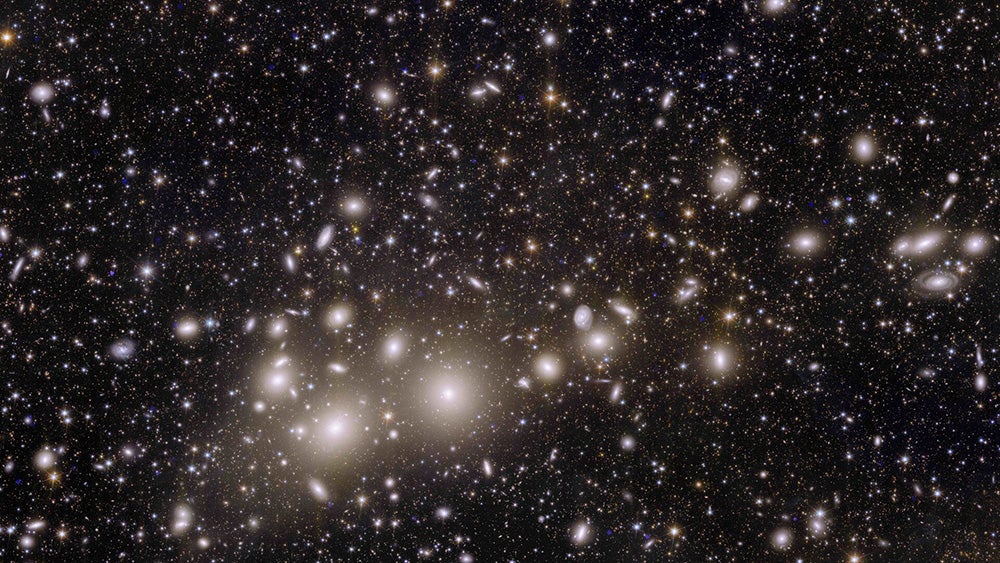
The Perseus Cluster of galaxies
Euclid's groundbreaking snapshot captures 1,000 galaxies of the Perseus Cluster and more than 100,000 distant ones, shedding light on previously unseen, far-off galaxies. By studying their distribution and shapes, cosmologists aim to understand how dark matter influenced our universe. This remarkable image offers unprecedented detail and insight into Perseus, a vast structure 240 million light-years from Earth. Astronomers confirm that galaxy clusters like Perseus require the presence of dark matter, a mystery Euclid aims to uncover across cosmic history.
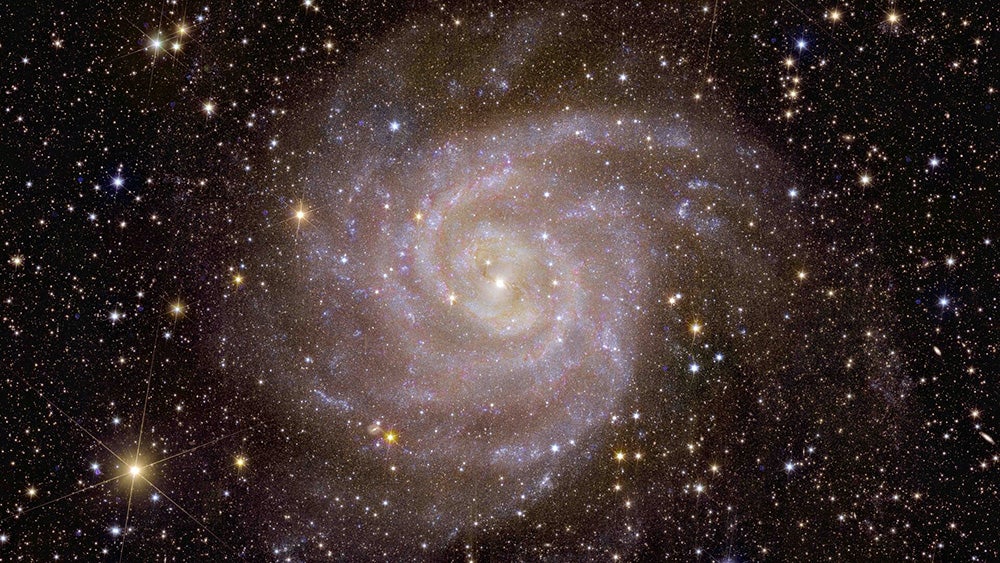
Spiral galaxy IC 342
Over its lifetime, Euclid will image billions of galaxies, revealing the unseen influence that dark matter and dark energy have on them. That's why it's fitting that one of the first galaxies that Euclid observed is nicknamed the 'Hidden Galaxy', also known as IC 342 or Caldwell 5. Thanks to its infrared view, Euclid has already uncovered crucial information about the stars in this galaxy, which looks a lot like our Milky Way.
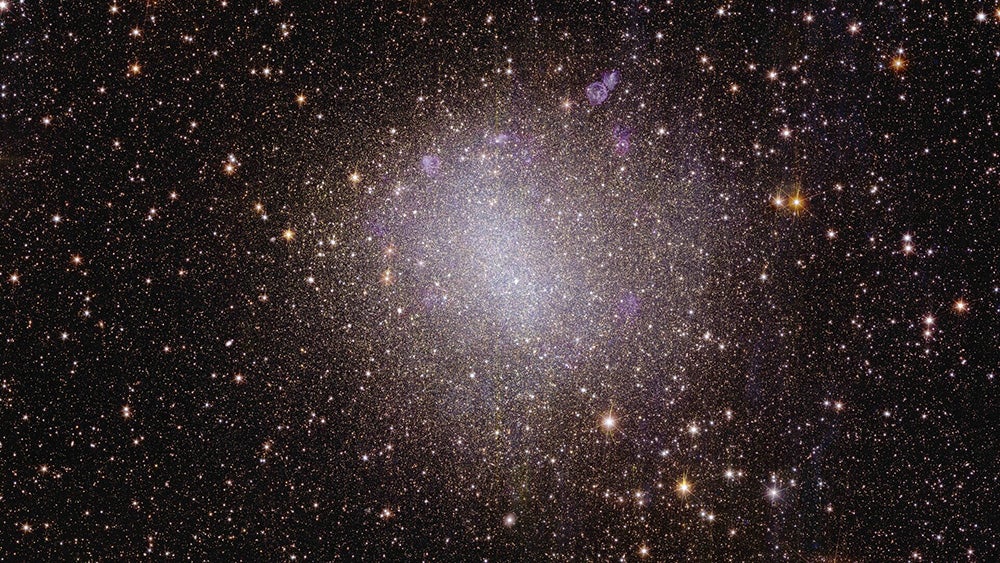
Irregular galaxy NGC 6822
For its 3D map of the universe, Euclid will observe the light from galaxies 10 billion light-years away. Most galaxies in the early universe don't have the typical spiral shape but are irregular and small. They are the building blocks for bigger galaxies like our own, and we can still find some of these galaxies relatively close to us. This first irregular dwarf galaxy that Euclid observed is called NGC 6822 and is located close by, just 1.6 million light-years from Earth.
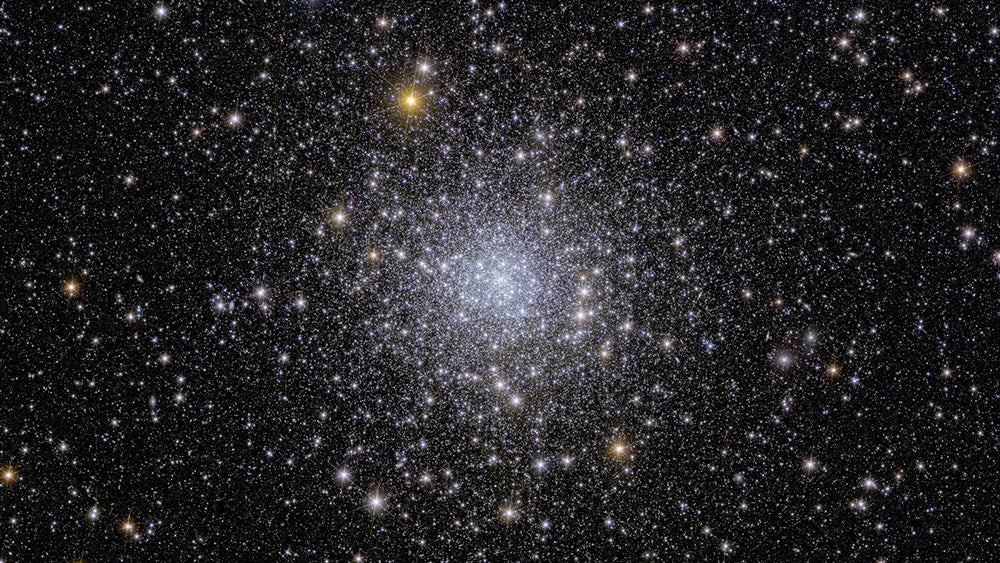
Globular cluster NGC 6397
In this captivating image, Euclid offers a unique perspective on NGC 6397, one of the Milky Way's closest globular clusters, situated approximately 7800 light-years from Earth. Globular clusters, comprising hundreds of thousands of stars bound by gravity, hold valuable insights. Euclid's exceptional ability to observe an entire cluster in one go and discern numerous faint stars unveils the Milky Way's history and provides clues about the mysterious presence of dark matter.
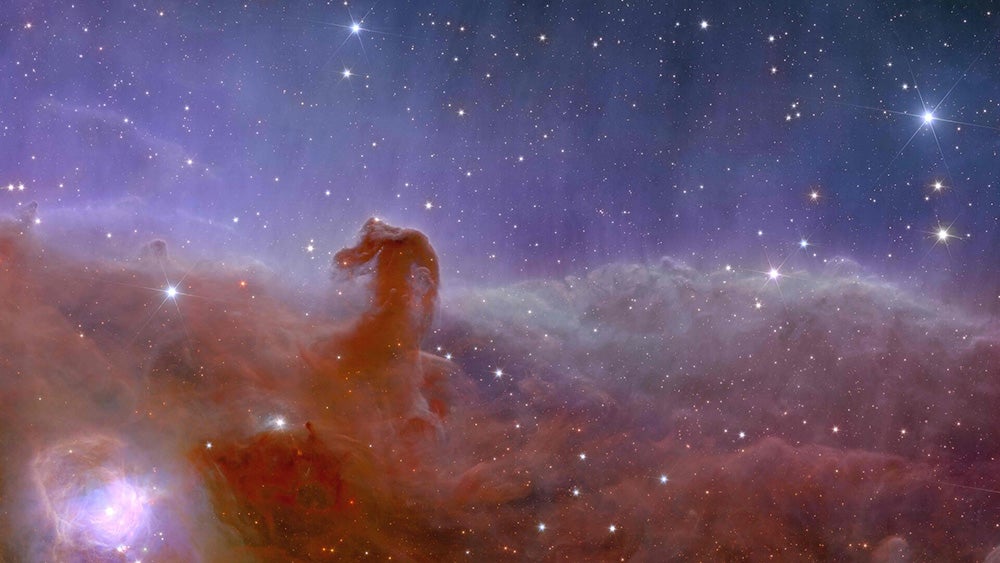
The Horsehead Nebula
Euclid shows us a panoramic view of the Horsehead Nebula, also known as Barnard 33 and part of the constellation Orion. In Euclid's new observation of this stellar nursery, scientists hope to find many dim and previously unseen Jupiter-mass planets in their celestial infancy, as well as young brown dwarfs and baby stars.
About the Euclid mission
Euclid is a European mission, built and operated by ESA, with contributions from NASA. Canadian organizations involved in the Euclid mission include the University of Waterloo, the University of British Columbia, the National Research Council of Canada (NRC), the Canada France Hawaii Telescope, the Canadian Space Agency and many others.
Euclid is designed to help scientists unravel the enigmatic influences of dark matter and dark energy on the evolution of our universe. A striking 95 per cent of the universe is composed of these elusive 'dark' entities, yet their elusive nature obscures our understanding as they manifest only subtle changes in the appearance and motions of observable celestial objects.
Over the next six years, Euclid will scan the shapes, distances and movements of countless galaxies, spanning a mind-boggling distance of 10 billion light-years to create its cosmic map.
What sets Euclid's apart is its remarkable capacity to deliver extraordinarily sharp visible and infrared images encompassing a substantial portion of the sky in a single observation session. Today's images exhibit Euclid's capability by displaying the full range of celestial objects, including bright stars and faint galaxies, with exceptional detail, even when examining the most distant galaxies.
"These images demonstrate the amazing abilities of the Euclid satellite and are a testament to the scientists that have designed and built this," Percival says. "This makes me look forward even more to the results on cosmology that we will get during the survey operations phase of the mission."
The team is doing the last fine-tuning of the spacecraft before routine science observations begin in early 2024. See the full size images and expanded commentary on ESA's website.






